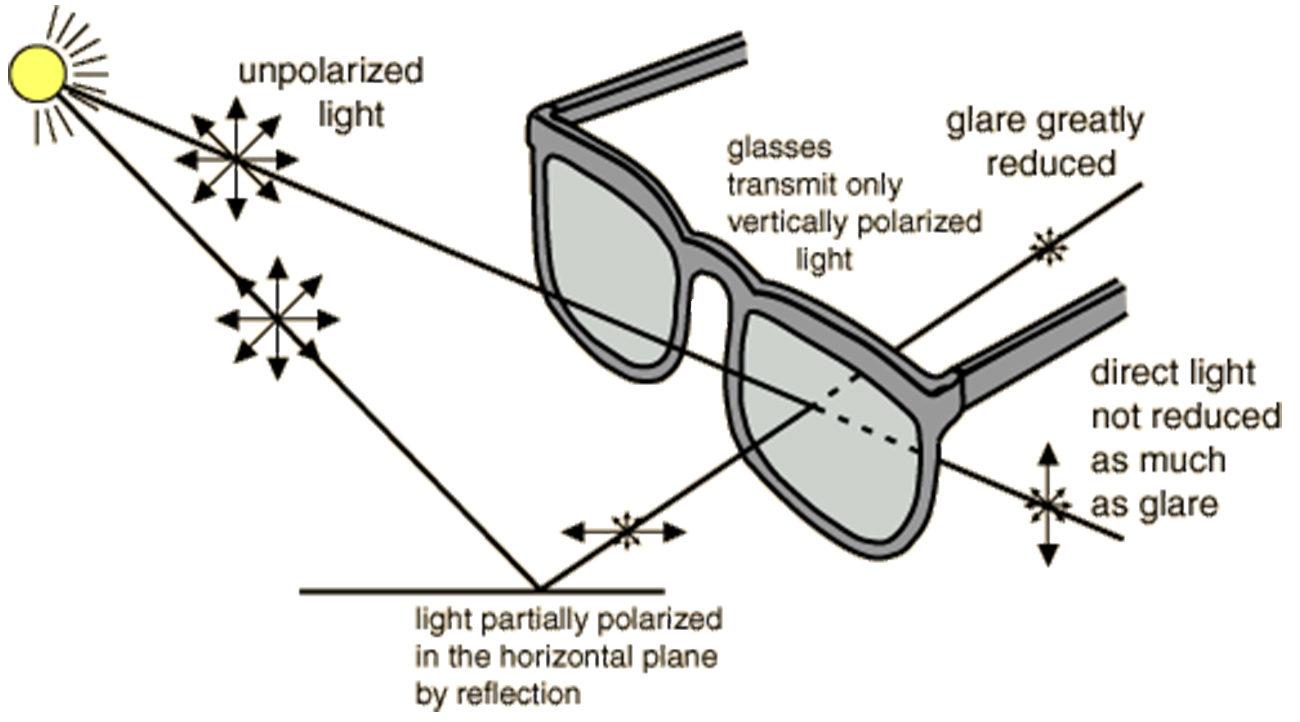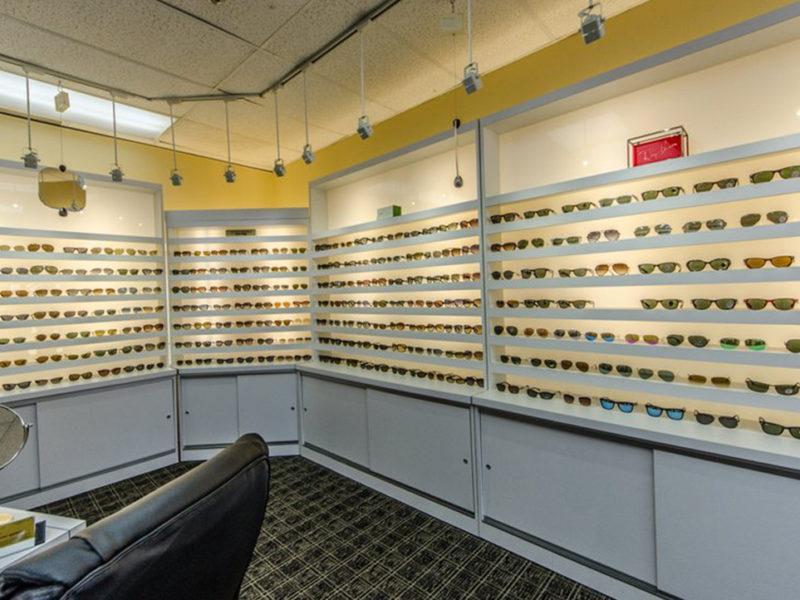“So How DO Sunglasses Work?”
Sunglasses use a variety of technologies to eliminate problems with light and glare. Tinting, Polarization and Mirroring help to overcome these troublesome issues.
The color of the tint determines what parts of the light spectrum are absorbed by the lenses. Gray tints are great all-purpose tints that reduce the overall amount of brightness with the least amount of color distortion. They’re a good choice for driving and general use as they offer good protection against glare.
Yellow or gold tints reduce the amount of blue light. Blue light can bounce and scatter off a lot of things, thereby creating a kind of glare known as blue haze. The yellow tint virtually eliminates the “blue” part of the spectrum and makes everything sharp and bright. This is a perfect tint for glasses relating to “snow” activities .
Amber or brownish tints are also good, all-purpose tints. They have the added benefit of reducing glare and absorb colors, like blue, in addition to UV rays. This can help prevent the formation and delay of cataracts.
Green tints filter some blue light and reduce glare. And because they offer the highest contrast and greatest visual acuity of any tint, they are very popular. These green lenses were developed by B and L for naval pilots use during World War II.
Purple and rose tints make the best choice for hunting or water sports because they offer the best contrasts of objects against green or blue backgrounds.
Today, many manufacturers employ a process where they build the tint right into the lenses. Alternatively, tinting can be applied to the surface of clear plastic and polycarbonate lenses. These lenses are literally dipped in a special small liquid vats containing the tinting material which is slowly absorbed into the plastic. Lenses can be darkened by leaving them in the liquid longer.
Most of the glare that causes paients to wear sunglasses comes from horizontal surfaces, such as water or a highway. A highly reflective horizontal surface will produce a lot of horizontally polarized light. Polarized lenses in sunglasses are fixed at an angle that only allows vertically polarized light to enter. It may sound complicated, but it definitely works to diminsh significant glare.
Sometimes you’ll see mirrored lenses. These are lenses with a reflective coating applied in a very thin, sparse layer. Often times the mirror coating is applied as a gradient that provides additional protection from light coming from above while allowing more light to come in from below or straight ahead.
There are many options to selecting the right sunglass lens. Some are more specialized vis a vis their use. Others are terrific for general use. Your optometrist or optician is experienced and knowledgeable in the proper sunwear and can help guide you in selecting the just-right lens for your needs. Working with a credible professional will insure you’re buying, and wearing, an authentic sunglass lens tailored to your specific needs. This will insure better vision and the good health of your eyes.
Mark Miller
President of Glasses Galore
Southampton Shopping Center • 482 Second Street Pike
Southampton, PA • 215.355.7SEE (7733)
Village at Newtown Shopping Center • 2842 S. Eagle Road
Newtown, PA • 215.579.1155
Fairless Hills Towne Square • 451 S. Oxford Valley Road
Fairless Hills, PA • 215.547.5470







